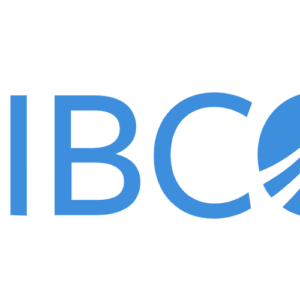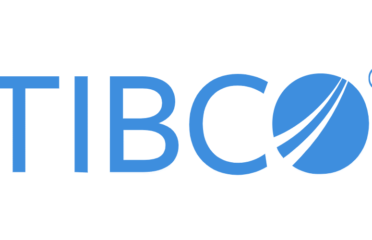Data Governance is a comprehensive set of policies, processes, and practices organizations implement to ensure their data assets’ proper management, quality, security, and use. The primary goal of data governance is to facilitate better decision-making, enable compliance with regulations, and maximize the value of data for an organization. Data governance covers various aspects, including:
- Data Quality: Ensuring data is accurate, consistent, complete, and up-to-date to support reliable analysis and decision-making.
- Data Security: Protecting sensitive and confidential data from unauthorized access, breaches, or leaks and ensuring compliance with relevant data protection regulations, such as GDPR and HIPAA.
- Data Access and Privacy: Defining and implementing policies for data access, sharing, and usage, ensuring that only authorized users have access to specific data, and managing data privacy in accordance with applicable laws and regulations.
- Data Lifecycle Management: Managing the entire data lifecycle, from creation and collection to storage, usage, archiving, and disposal, while maintaining data quality and security throughout the process.
- Data Integration: Establishing processes and practices to integrate and store data from different sources consistently, enabling seamless analysis and reporting across the organization.
- Data Cataloging and Metadata Management: Creating and maintaining a comprehensive data catalog that includes metadata (information about the data) to make it easier for users to discover, understand, and use the data effectively.
- Data Stewardship: Assigning responsibility for data management and governance to designated individuals or teams (data stewards) who act as intermediaries between business users and IT, ensuring data quality and compliance with policies and regulations.
- Data Architecture: Defining and implementing a consistent and scalable data infrastructure that aligns with organizational goals and supports effective data management, analytics, and reporting.
- Data Governance Framework: Establishing a formal framework, including a data governance council or committee, that defines roles, responsibilities, policies, and procedures for data governance across the organization.
- Compliance and Audit: Ensuring adherence to data governance policies and regulatory requirements and conducting regular audits to identify and address gaps or areas of improvement in data governance practices.
Enterprises need a Robust Data Governance Strategy
Enterprises need a robust data governance strategy for several reasons that directly impact their ability to make data-driven decisions, maintain regulatory compliance, and ensure the overall success of their data management efforts. Some key reasons for implementing a solid data governance strategy are:
- Improved Data Quality: A robust data governance strategy helps ensure data is accurate, consistent, complete, and timely, crucial for informed decision-making and reliable analytics.
- Regulatory Compliance: Enterprises must comply with various data protection and privacy regulations, such as GDPR, HIPAA, or CCPA. A robust data governance strategy helps maintain compliance by defining and enforcing data storage, access, and usage policies.
- Data Security: Data breaches can result in significant financial and reputational damage. A well-implemented data governance strategy helps protect sensitive data by establishing proper access controls, monitoring, and security measures.
- Enhanced Data Privacy: Data governance plays a vital role in safeguarding the privacy of customer and employee data, ensuring that data collection, storage, and usage practices adhere to relevant privacy regulations and policies.
- Better Decision-making: Effective data governance ensures that data is consistent, reliable, and easily accessible, enabling organizations to make data-driven decisions more efficiently and confidently.
- Efficient Data Management: By defining roles, responsibilities, and processes, a robust data governance strategy streamlines data management, reducing the likelihood of errors, duplication, or inconsistencies.
- Data Integration: A strong data governance strategy facilitates data integration across various sources and systems, ensuring seamless analysis and reporting across the organization.
- Increased Trust in Data: With a well-defined data governance strategy, stakeholders across the organization can trust the data they use for decision-making, analytics, and reporting.
- Cost Savings: By implementing a data governance strategy, enterprises can reduce costs associated with data storage, management, and error correction, as well as avoid potential fines and penalties for non-compliance with regulations.
- Competitive Advantage: Organizations that effectively manage and govern their data can gain a competitive advantage by leveraging insights from their data to drive innovation, improve customer experiences, and optimize operations.
Data Governance Organization and Structure:
A data governance organization comprises various roles with specific responsibilities, working together to effectively implement and manage data governance initiatives. Key roles and their duties within a data governance organization include:
Data Governance Council or Steering Committee:
- Develop and establish the overall data governance strategy and framework.
- Define high-level policies and procedures for data management.
- Prioritize data governance initiatives and allocate resources.
- Monitor progress and ensure alignment with organizational goals.
Data Governance Program Manager or Director:
- Oversee and manage the data governance program’s day-to-day operations.
- Coordinate between different stakeholders and teams involved in data governance.
- Plan and execute data governance projects and initiatives.
- Ensure compliance with policies, procedures, and regulations.
Data Stewards:
- Act as intermediaries between business users and IT, ensuring data quality and compliance with policies and regulations.
- Define and maintain data definitions, standards, and metadata.
- Identify, investigate, and resolve data quality issues.
- Communicate data governance policies and best practices to stakeholders.
Data Owners:
- Responsible for the data’s quality, integrity, and security within their domain or business unit.
- Collaborate with data stewards to define data standards and policies.
- Ensure adherence to data governance policies and procedures within their area of responsibility.
- Oversee data access, sharing, and usage within their domain.
Data Custodians or Data Managers:
- Manage the technical aspects of data storage, access, and maintenance.
- Implement and enforce data governance policies and procedures at a technical level.
- Collaborate with data stewards and owners to ensure data quality and security.
- Monitor and optimize data infrastructure and performance.
Data Analysts and Data Scientists:
- Use governed data for analysis, reporting, and decision-making.
- Provide feedback on data quality issues and suggest improvements.
- Collaborate with data stewards and data owners to ensure data accuracy and consistency.
- Adhere to data governance policies and procedures during data handling and analysis.
Data Privacy and Security Officers:
- Develop and enforce data security and privacy policies in compliance with applicable laws and regulations.
- Collaborate with data owners and custodians to ensure proper data access controls and security measures.
- Monitor data security and privacy incidents and manage remediation efforts.
- Provide training and awareness on data security and privacy best practices.
Legal and Compliance Teams:
- Ensure data governance policies and procedures align with legal and regulatory requirements.
- Assist in developing data retention, disposal, and archiving policies.
- Monitor compliance with data governance policies and relevant regulations.
- Manage audits and assessments related to data governance.
Data Governance and Data Management:
Data Governance and Data Management are related but distinct concepts in the context of an organization’s data strategy. Here, we’ll explore their similarities and differences and how they co-exist within an enterprise.
Similarities:
- Both Data Governance and Data Management aim to improve the overall value of an organization’s data assets.
- Both involve collaboration among stakeholders, such as business users, IT teams, data stewards, and owners.
- Both contribute to better decision-making, data quality, security, and regulatory compliance.
Differences:
- Data Governance is a set of policies, processes, and practices organizations implement to ensure their data assets’ proper management, quality, security, and use. It focuses on defining roles, responsibilities, standards, and guidelines for data handling and usage within an organization.
- On the other hand, data management is the process of collecting, storing, maintaining, and using data throughout its lifecycle. Therefore, it involves the technical and operational aspects of data handling, such as data integration, storage, quality, and security.
In essence, Data Governance provides the framework and guidelines for Data Management, while Data Management focuses on the actual execution and implementation of those guidelines.
Co-existence in an Enterprise: Data Governance and Data Management co-exist as two interdependent components of a comprehensive data strategy. Data Governance defines policies, standards, and procedures, while Data Management implements and enforces these guidelines in day-to-day operations.
- Data Governance establishes the principles and best practices for data handling, which Data Management follows to ensure consistent and reliable data handling across the organization.
- Data Governance provides the structure, roles, and responsibilities for managing an organization’s data assets, while Data Management assigns specific tasks and responsibilities to individuals and teams within the defined structure.
- Data Governance develops the strategic goals and objectives for an organization’s data assets. At the same time, Data Management focuses on the tactical execution of those goals through data collection, storage, maintenance, and usage.
- Data Governance ensures regulatory compliance and data security by setting appropriate policies and guidelines, while Data Management implements and enforces these policies through technical controls, monitoring, and reporting.
Challenges and Pitfalls of Data Governance:
Successfully implementing data governance in an enterprise can be challenging due to various factors. Some common challenges and pitfalls include:
- Lack of executive support and sponsorship: Data governance initiatives require strong support from top management to ensure resources, commitment, and alignment with organizational goals. Without executive sponsorship, data governance efforts may struggle to gain traction and face resistance from different departments.
- Insufficient resources and budget: Implementing data governance requires dedicated resources, including skilled personnel, technology, and budget. Organizations may underestimate the investment needed, which can hinder the success of data governance initiatives.
- Inadequate communication and collaboration: Data governance involves collaboration across multiple departments and stakeholders, including business users, IT teams, and data stewards. Ineffective communication and lack of collaboration can lead to confusion, misalignment, and resistance to change.
- Undefined roles and responsibilities: Unclear roles and responsibilities can create confusion, leading to ineffective data governance. Defining roles and responsibilities clearly and assigning tasks to specific individuals or teams is essential.
- Resistance to change: Data governance initiatives often require changes in processes, systems, and how people work. Employees may resist these changes due to a lack of understanding or fear of additional workload. Managing change effectively and addressing concerns are crucial to the success of data governance efforts.
- Complexity and scope: Organizations may tackle too many data governance issues simultaneously, resulting in a complex and overwhelming initiative. It’s essential to prioritize and focus on specific areas, gradually expanding the scope as the organization gains experience and maturity.
- Lack of clear goals and metrics: Without well-defined goals and measurable success indicators, data governance initiatives may struggle to demonstrate value and maintain momentum. Setting clear, achievable goals and monitoring progress using relevant metrics is crucial.
- Overemphasis on technology: While technology is essential for data governance, focusing solely on tools and technology without addressing underlying processes, people, and cultural aspects can lead to ineffective data governance.
- Inadequate training and education: Employees may lack the necessary knowledge and skills to support data governance initiatives. Providing adequate training and education on data governance principles, best practices, and tools is essential for success.
- Inconsistent enforcement of policies and standards: Inconsistent enforcement of data governance policies and standards can lead to confusion and undermine the program’s effectiveness. Organizations must ensure that policies and standards are consistently applied and enforced across the enterprise.
Steps for Implementing Data Governance in an Enterprise:
Implementing data governance in an enterprise requires a well-planned roadmap and a systematic approach. Here’s a suggested roadmap with steps to guide you through the process:
Step 1: Assess current state and needs
- Evaluate the current state of your organization’s data management practices.
- Identify areas where data governance can add value or address challenges.
- Prioritize data governance needs based on organizational goals and objectives.
Step 2: Secure executive sponsorship
- Obtain support from top management to ensure resources, commitment, and alignment with organizational goals.
- Appoint an executive sponsor responsible for championing and overseeing the data governance initiative.
Step 3: Define the data governance framework
- Develop a data governance framework that outlines policies, processes, and best practices.
- Define roles and responsibilities for data governance, including data stewards, data owners, and data custodians.
- Establish a data governance council or steering committee to guide the initiative.
Step 4: Set goals, objectives, and metrics
- Define clear, measurable goals and objectives for your data governance initiative.
- Identify key performance indicators (KPIs) and metrics to track progress and measure success.
Step 5: Develop a communication and change management plan
- Develop a plan to communicate the benefits and objectives of data governance to stakeholders across the organization.
- Address potential resistance to change by providing training, support, and resources.
Step 6: Implement data governance policies and processes
- Establish data governance policies, such as data quality, data security, and data privacy.
- Implement processes for data classification, data lineage, and metadata management.
- Develop and enforce data standards, data definitions, and data cataloging.
Step 7: Train and educate employees
- Provide training and education on data governance principles, best practices, and tools.
- Ensure data stewards, data owners, and data custodians understand their roles and responsibilities.
Step 8: Deploy data governance tools and technologies
- Select and implement data governance tools and technologies like data catalogs, data quality tools, and data lineage solutions.
- Ensure integration with existing systems and data infrastructure.
Step 9: Monitor and measure progress
- Regularly monitor progress against KPIs and metrics.
- Evaluate the effectiveness of data governance policies and processes.
- Identify areas for improvement and adjust the data governance program as needed.
Step 10: Continuously improve and evolve
- Review and update data governance policies, processes, and best practices regularly.
- Adapt the data governance program as the organization grows, changes, or encounters new challenges.
- Encourage a culture of continuous improvement and data-driven decision-making across the organization.
Top Features and Functionality of Data Governance Software Solutions:
Here’s an exhaustive list of core features and functions typically found in data governance software:
Data Cataloging:
- Data discovery and inventory
- Metadata management
- Business glossary and taxonomy management
- Data classification and tagging
- Data profiling and statistics
Data Lineage:
- Data lineage visualization and tracking
- Data source identification
- Data flow mapping and analysis
- Impact analysis and change management
Data Quality:
- Data quality rules and validation
- Data profiling and anomaly detection
- Data cleansing and enrichment
- Data standardization and deduplication
- Data quality monitoring and reporting
Data Privacy and Security:
- Data privacy policy management
- Data masking and anonymization
- Data access control and permissions
- Data security and encryption
- Data breach detection and prevention
Data Stewardship:
- Role-based access and responsibilities
- Issue tracking and resolution management
- Data governance workflow and approvals
- Collaboration and communication tools
Data Integration and Transformation:
- Data ingestion and extraction
- Data transformation and validation
- Data mapping and schema management
- Data integration with various sources and systems
Data Lifecycle Management:
- Data retention, archiving, and disposal policies
- Data storage and backup management
- Data versioning and history tracking
- Data migration and synchronization
Master Data Management:
- Master data modeling and definition
- Master data consolidation and harmonization
- Master data hierarchy and relationship management
- Master data governance and validation
Reference Data Management:
- Reference data definition and modeling
- Reference data import and export
- Reference data validation and mapping
- Reference data versioning and synchronization
Policy and Compliance Management:
- Data governance policy definition and Enforcement
- Compliance monitoring and reporting
- Audit trail and history management
- Regulatory requirement tracking and management
Reporting and Analytics:
- Data governance dashboards and KPI tracking
- Data governance initiative progress reporting
- Data quality and compliance reporting
- Data usage and access analytics
Automation and AI:
- Machine learning-driven data classification
- Automated data lineage discovery
- AI-assisted data quality management
- Automation of data governance workflows
Extensibility and Integration:
- API support for custom integrations
- Integration with data management, BI, and analytics tools
- Integration with data storage and processing platforms
- Support for various data formats and standards












